Sunny
Will it be one way, or round trip?
It’s after the end of the world! Don’t you know that yet?
It was a pretty remarkable claim to make in the 1970s, but Sun Ra, speaking through North Carolina singer June Tyson, was way ahead of his time. And he was one of the most memorable experiences of my time in New York.
Born in Alabama as Herman Poole Blount in 1934, he later changed his name to Le Sony'r Ra, shortening it to Sun Ra, a reference to the Egyptian god of the sun. It’s hard to adequately describe his contribution to the arts, although Whitman’s “I contain multitudes” is a good place to start.
Ra was a piano prodigy, a synthesizer virtuoso, a jazz arranger, a composer, a poet, a vocalist, a visionary, a percussionist and leader of the “Arkestra,” a musical collective, varying in membership, that for decades shared a house in the Germantown section of Philadelphia. He worked with straight-ahead jazz players and big bands there as well as in Chicago and New York, crafting his own incredibly idiosyncratic and wildly eclectic music.
At one point—the year remains in question—he had a visionary experience of being teleported to Saturn, where creatures with little antennae instructed him to speak to the world through music. Later, Ra and members of the band took to wearing shiny, metallic, Egyptian-cum-science fiction costumes, never taking themselves too seriously as they pioneered the most outlandish free jazz.
The 62-minute “Sun Ra edit” of the film on VHS. An 82-minute version has since been released.
Space is the Place, the 1974 film version of his album by the same name, is described by The Criterion Channel as “a wild, kaleidoscopic whirl of science fiction, sharp social commentary, goofy pseudo-blaxploitation stylistics, and thrilling concert performance, in which the pharaonic Ra and his Arkestra lead an intergalactic movement to resettle the Black race on their utopian space colony.” That’s a pretty good summation of Ra’s entire career.
Ra became known to many New Yorkers by way of the Squat Theatre, founded in Budapest in the 1960’s by Hungarian dissidents, many of whom got kicked out of the country in the 1970’s before decamping to a 23rd Street storefront on Manhattan’s west side. The 70’s and 80’s were heady times for the arts in the city, and with the Chelsea Hotel just down the block, the Squat was a nexus of creativity.
The political exiles might stage conceptual theater pieces in the window, hold a Soviet film/disco night with a showing of Leni Riefenstahl’s Olympia, or host acts like Debby Harry, John Lurie, Lenny Kaye and the Lone Wolves, or James White and the Flaming Demonics in Hell. They also included, by their count, 47 shows by the Arkestra.
My buddy Rob introduced me to Sun Ra’s music and his inventive, hand-drawn record albums. We knew something was up when he’d see Ra having lunch at the Edison Hotel, a way station for visiting musicians near our shared offices in Times Square. Or maybe I’d see a deely-bopped dude with a horn and a gold lamé shirt riding the subway uptown towards Harlem in the wee hours.
Arkestra concerts were a feast for the senses with a vibe all their own: there were costumes and dancers (Tyson also was the collective’s costume designer and choreographer), futuristic sets, drums, projections and chants. When a tree on their Philadelphia street was struck by lightning, its trunk was fashioned into a “Cosmic Infinity Drum” which they used on stage. There were world-class musicians, like tenor saxophonist John Gilmore, and they were communicating.
Ra’s early albums were quite traditional and listenable, though later ones could be excruciatingly avant-garde. I remember a reviewer counseling that you might be forgiven for sailing one of them— I think it was The Heliocentric Worlds of Sun Ra— across the room like a Frisbee.
I experienced Ra live several times, once at The Bottom Line, a downtown club near New York University. The venue was intimate enough that I and the entire audience was enlisted in a conga line appending the song, We Travel the Spaceways, chanting, “Will it be one way, or round trip?” while pausing for a bunny hop on beat.
I was hooked. Soon I was heading out to Rutgers University’s Institute of Jazz Studies, where I could dub cassette tapes of records like Sun Ra in Egypt for educational purposes— my own.
The Sun Ra Intergalactic Arkestra (or maybe it was his Astro-Intergalactic-Infinity Arkestra; the name changed as the lineup swelled) performed at The Bitter End on Bleecker Street one memorable New Year’s Eve in the 1980s, with about 17 players, the largest assemblage of the band I had ever seen. I have an abiding image of alto sax player Marshall Allen, red-faced, blowing his horn so hard that you almost expected his lungs to turn inside out. Ra seemed to approve, following it up with a gentle glissando on his grand piano, wearing an ear-to-ear grin.
Then there was an appearance at SummerStage in Central Park, a Sunny day in more ways than one, where giant paper mache heads on sticks bobbed above the crowd as wild sounds filled the air.
Those Sunny days seem a long time ago. Ra took his strange celestial road home to Saturn in 1993, but the band continues under the leadership of Marshall Allen, now 98 years old. You may not be able to locate an LP with original, hand-drawn artwork, but through the wonders of streaming services, you can listen to nearly 100 of his albums—Jazz in Silhouette, Cosmic Tones for Mental Therapy, or Disco 3000, perhaps—and YouTube seems to be an endless source of obscure concert footage.
If science fiction synth isn’t your cup of tea, there’s always I Could Have Danced All Night. It all swings. It’s all worth a listen.
And it’s all timeless. Afrofuturist that he was, Ra engaged with existential issues like nuclear war, penning a call-and-response song with the same name:
Nuclear War (Yeah)
Nuclear War (Yeah)
Talkin’ about (Yeah)
Nuclear war (Yeah)
It’s a motherfucker
Don’t you know
If they push that button,
Your ass has gotta go
Ahead of his time? For sure.
Will it be one way, or round trip?
© 2022 David Potorti


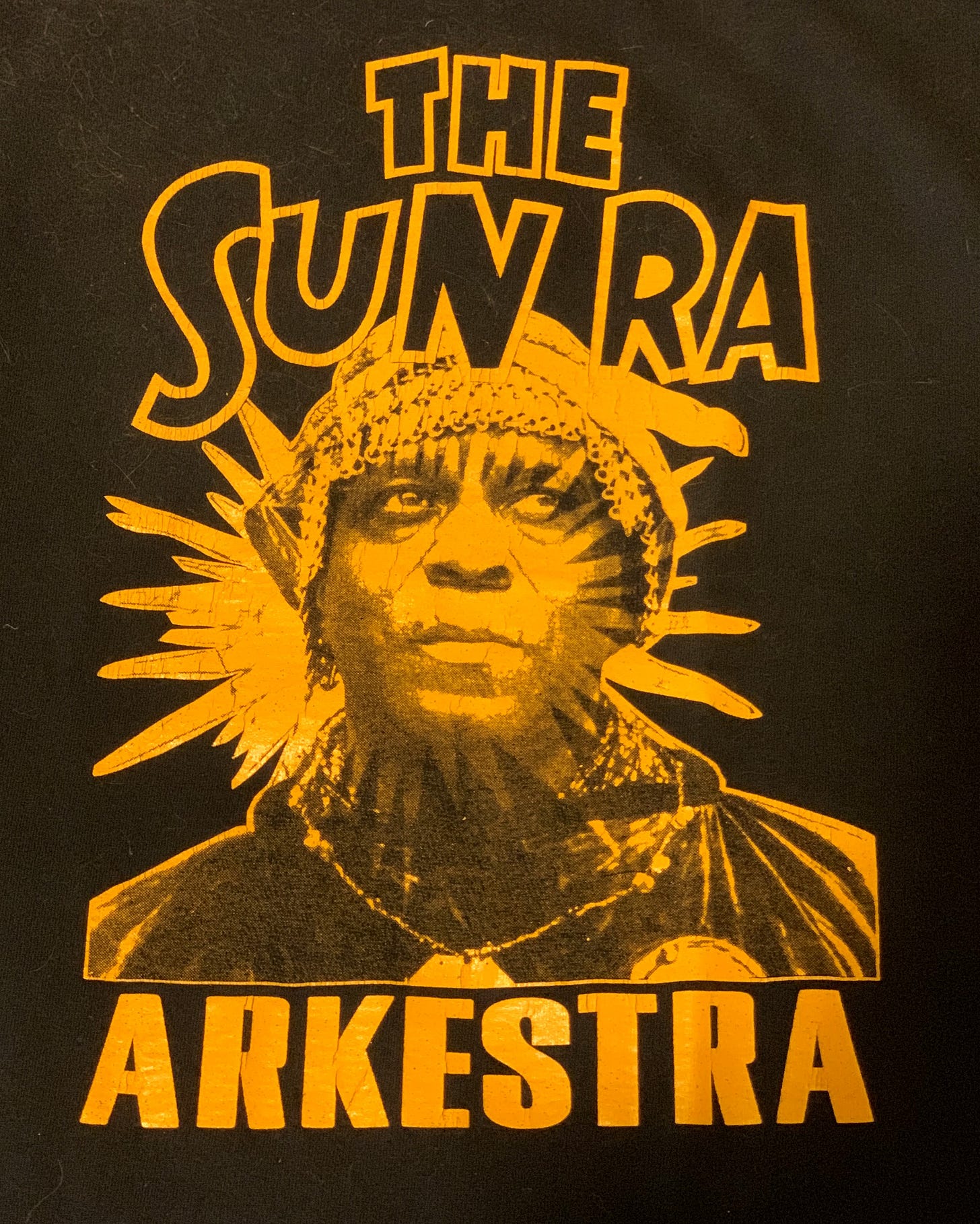

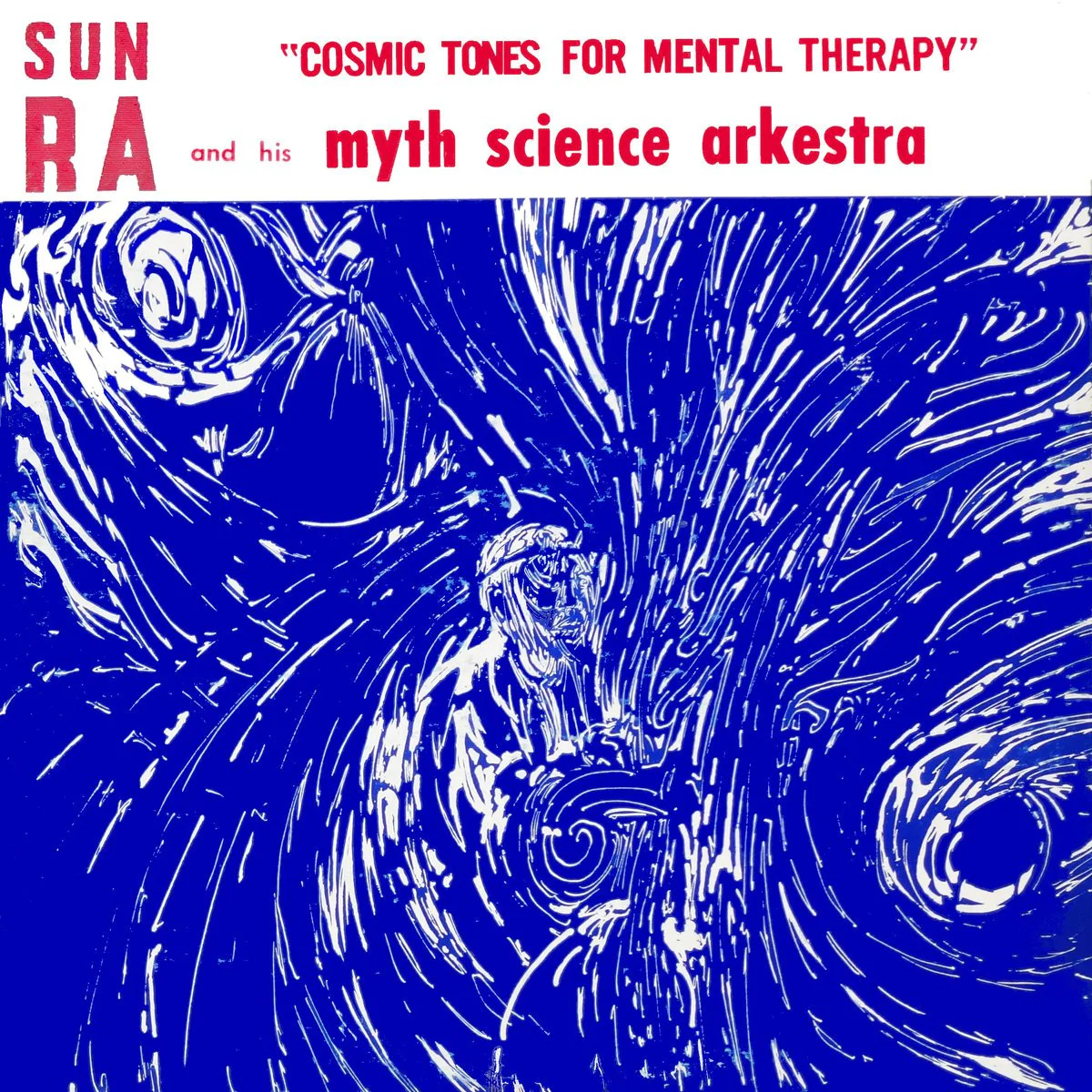
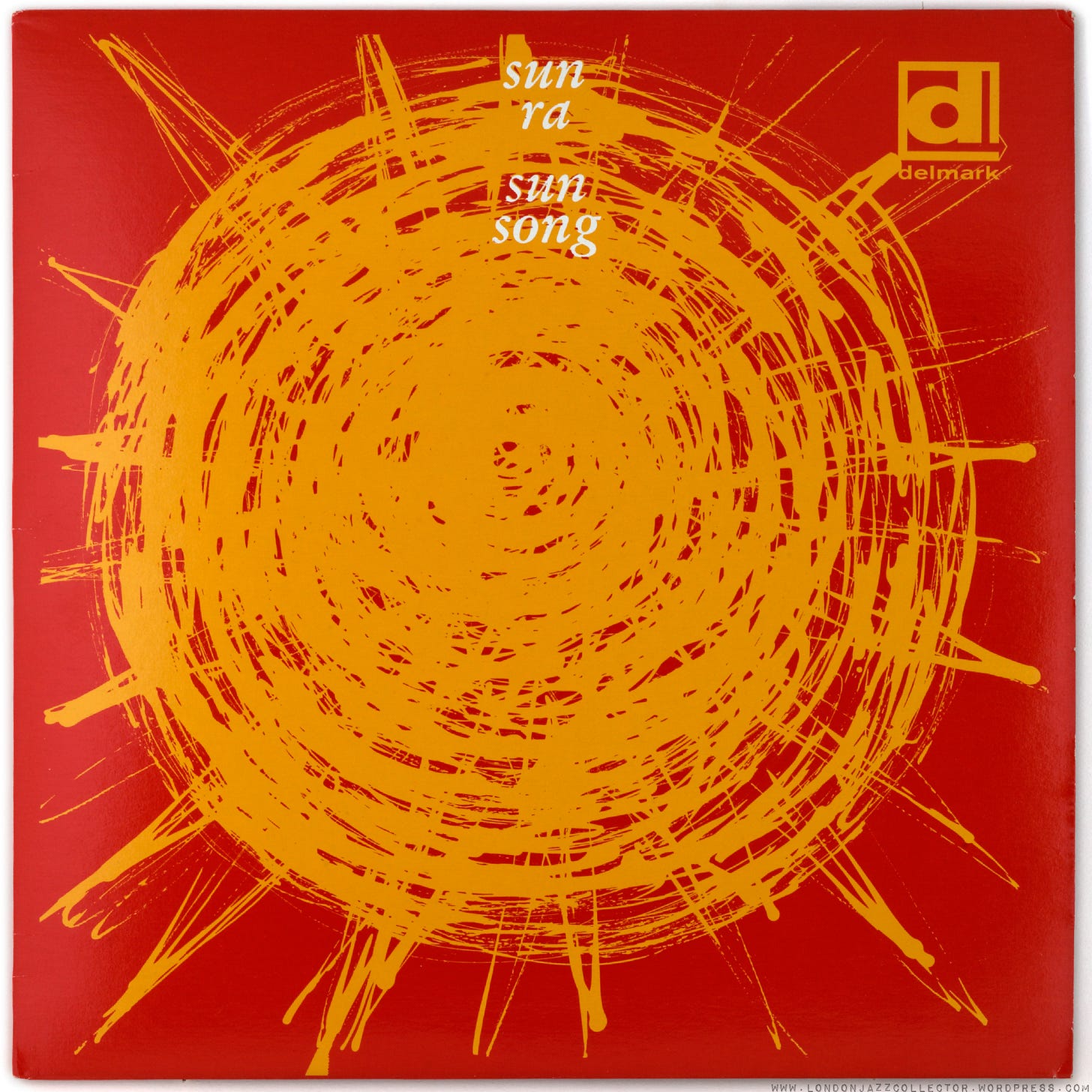


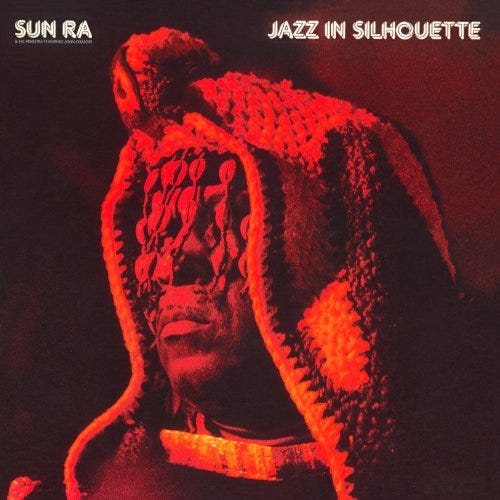

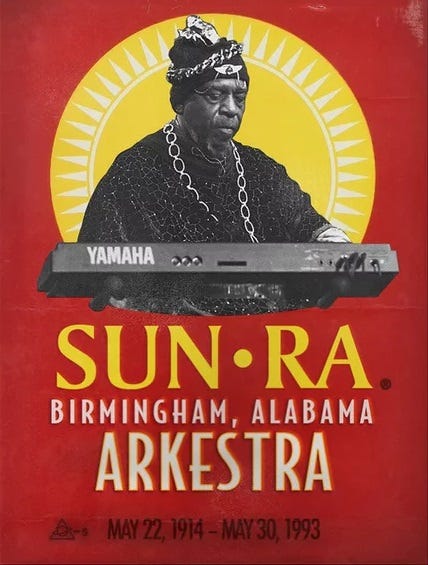
Wonderful!